A Spring Walk Through Piet Oudolf’s New Garden in the Bronx
http://decor-ideas.org 05/18/2014 22:05 Decor Ideas
With the blooming of the cherries and crabapple trees, spring is in full spring at The New York Botanical Garden in the Bronx. One of the great excitements of the season is the newest garden, a long herbaceous border called the Seasonal Walk, which was recently redesigned by Piet Oudolf, the Dutch plantsman known for his naturalistic designs, in bloom now.
Info: The New York Botanical Garden is open year-round, Tuesday to Sunday, 10 a.m. to 6 p.m.
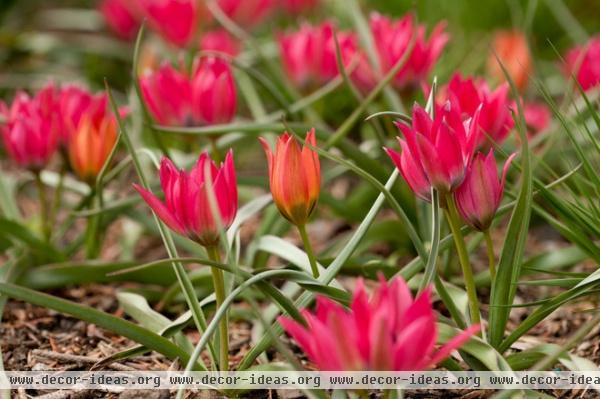
Visitors will see a frothy mix of bulbs popping up amid basal clumps of perennials and grasses in what resembles a linear meadow planting.
Here’s a striking early combination of species tulips in pretty shades of pink and orange. Tulipa ‘Little Beauty’ is brilliant pink and grows only 6 inches tall; T. ‘Little Princess’ is also dwarf with richly colored orange petals.
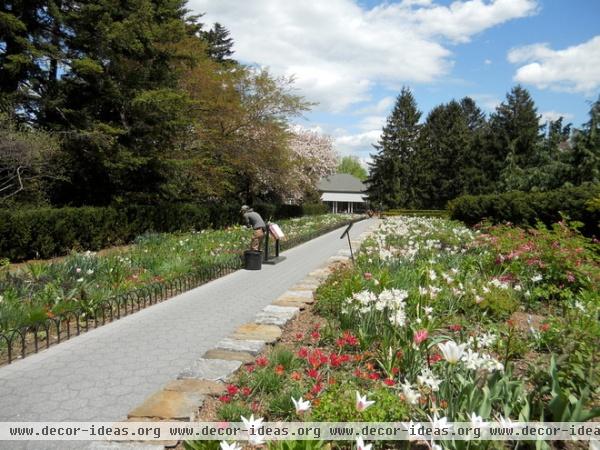
Over 200 feet long and about 14 feet wide, the main border is flanked by a similar border that’s raised above a stone wall.
“We asked Piet to do a redesign of our seasonal walk so that we could have a perennial-based design that was going to give us something gorgeous starting in early April running all the way through the end of the year,” says Kristin Schleiter, who curates the outdoor gardens (except the rock and Native Plant Garden and the Rockefeller Rose Garden).
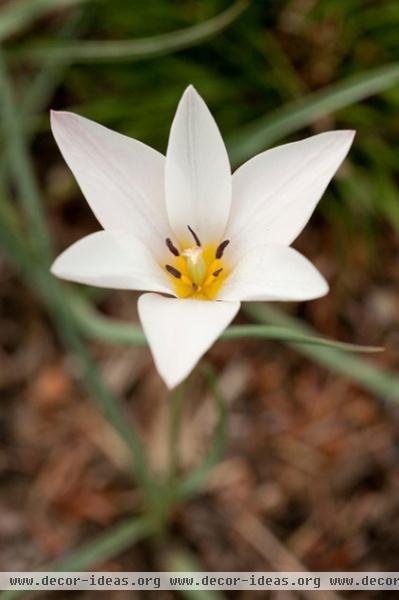
The species tulip ‘Lady Jane’ appears on thin, delicate stems and grows about 8 inches tall. It’s called the candy stripe tulip because the outside of the petals are striped pink and white while the interior is a pure white.
This type of tulip isn’t as widely planted as the big Darwin hybrids but deserves to be. Narrow leaves are inconspicuous and blend easily into emerging vegetation, especially ornamental grasses.
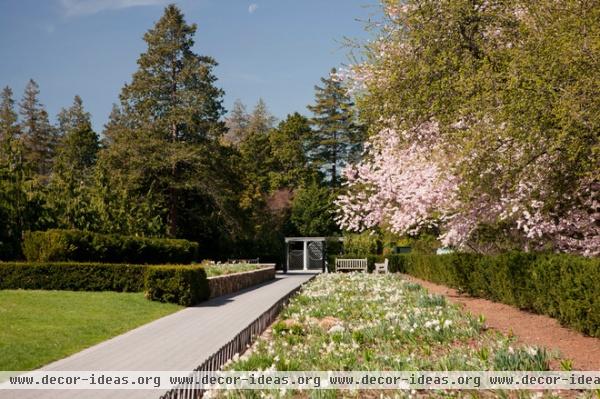
At the end of the pathway is an arbor and terrace where weddings and other ceremonies take place, so the borders form a corridor for these special occasions.
“Our wedding season starts usually the middle of April and runs all the way through the end of October, so this border had to be designed to be beautiful and wedding ready that whole time,” notes Schleiter. “It starts in the early spring with minor bulbs, progresses onto daffodils and species tulips, and then the perennials start to crescendo in July and August.”
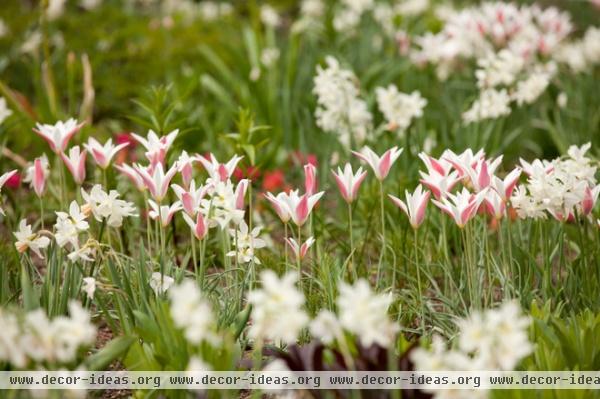
The tulips are small in stature, so they make a big impact when they’re planted in masses that repeat throughout the border. If you like this look, remember to order in bulk and spread clumps around so the eye travels.
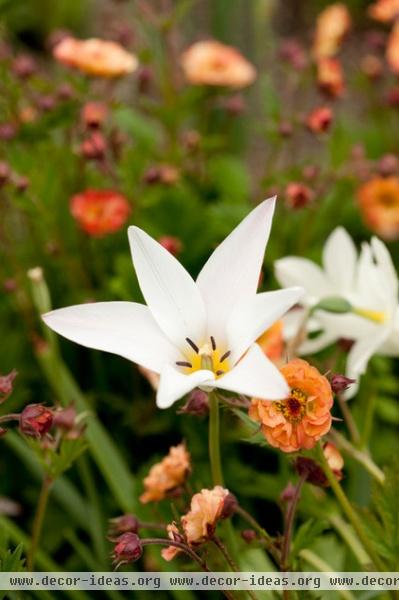
An unusual orange double geum called ‘Mai Tai’ makes an interesting companion plant to this tulip. The designer has paired the geum elsewhere with Anenome ‘Wild Swan’ and Persicaria ‘Alba.’

Before planting began, the beds were cleared and a new hedge was installed (where there had been a row of invasive burning bush) to create a low evergreen backdrop on the long side. Some very old large evergreens that were shading the short side were replaced with smaller trees.
Over a couple of days in November, crews planted grasses, perennials and bulbs in areas that were gridded out with string into square blocks while Oudolf worked on site.
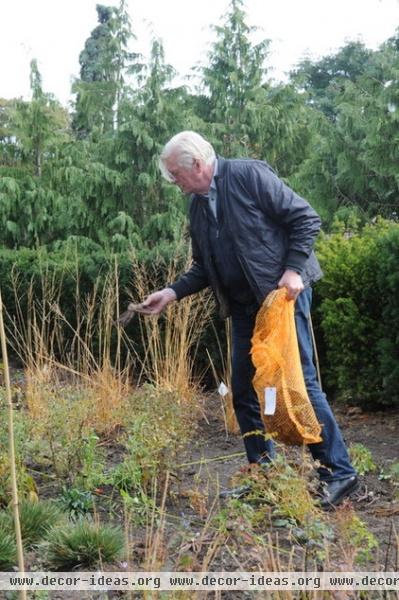
Key bulbs added by Oudolf (shown here) during the planting event included foxtail lily (Eremurus himalaicus), which forms white spikes on 7-foot-tall stems, ornamental onion (Allium nigrum) and single dahlias.

Tall structural plants appear throughout the scheme — many of them will grow to 8 feet or more — and will bring a vertical interest to the long expanse. One of the tallest perennials is Rudbeckia subtomentosa ‘Henry Eilers’, a U.S. native cultivar commonly called sweet coneflower. The plant stands erect on stiff stems and makes a great fall display with its seedheads, which attract birds.
Gold dew tufted hair grass (Deschampsia cespitosa ‘Goldtau’, zones 4 to 9), willow leaf blue star (Amsonia hubrichtii) and clumps of thalictrum (Thalictrum x ‘Elin’) will make a stunning combination in the coming months.

The garden is designed to look good all year, especially in winter. Stems and seedheads will be left up and stand out against the solid evergreen backdrop. Here you can see the showy heads of white coneflower (Echinacea purpurea ‘Virgin’) being added to the matrix at the end of last season.
The Seasonal Walk will celebrate its official opening in September this year. For now the gardeners are keeping an eye on emerging growth and making sure everything gets established.

“One of the things that’s wonderful about this garden is that you can choose your favorite 10- or 15-foot section and bring it home to replicate,” says Schleiter.
If you’re thinking of renovating a border and you’re a fan of lush, textural plantings, there are many great ideas here that can be replicated on a smaller scale:
Use tall plants that grow over 6 feet to create vertical interest.Intermingle species to create an integrated plant community that mimics nature.Repeat plant groups throughout your garden to move the eye through the space.Use species tulips in large quantities to make a stunning early spring display.Combine airy grasses with perennials that form textural seedheads (coneflowers, echinops) for a good fall show.Design with dormancy in mind and plan to keep as much of the garden up through fall and winter as possible.For more planting ideas, read Planting: A New Perspective (Timber Press), which explains the process of designing gardens that are made up of repeating blocks or waves of structural plants. It was published last year and written by Oudolf and Noel Kingsbury.
More: Easygoing Tulip Ideas From a Grand California Garden
Related Articles Recommended












